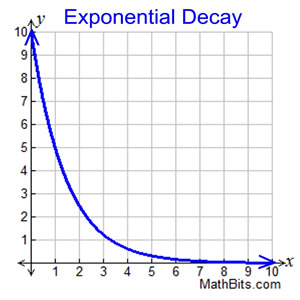
Sometimes we use words like increasing and decreasing or positive and negative to describe the relationship of a set of data.įor example: The data on the plot in the box below have a moderately strong negative linear relationship.The strength of those relationships can also be characterized using words like strong, moderate or weak.Often we use words that describe the curve or line made by the data: e.g., linear, exponential, asymptotic, periodic, etc.Data can be described qualitatively using specific terminology: And, yet, that is generally the main reason that we use plots of data - to describe the data. Students struggle with the description of data on a plot. (modified from Anderson and Swanson, 2005) Describing plots and graphs the reason that we plot data is so that we can more easily observe trends or behavior of the data.the two axes intersect at point called the origin with coordinates (0,0),.sometimes the ordered pairs are listed in tabular format with headings that correspond to the labels on the axis.the second number refers to vertical position on the y-axis,.the first number refers to horizontal position on the x-axis,.a point on the graph is denoted by an ordered pair (or coordinates (e.g., (3,8)) where:.X-axis) and vertical (often called the y-axis), Here are some important bits of information that can help faculty to make sure that students are up to speed on plotting: The Teaching with Data module of Starting Point has some information (and links) describing good ways to teach students about plotting. Plotting ordered pairs on a Cartesian plot can be difficult for students even though it is likely that they have done it numerous times in their academic careers.

In the end, students seem to be able to relate to wanting something to be easy to read and, in the process, begin to learn about making realistic choices.

Then others can use that equation to understand the system, too, because math is a universal language. The equation for a line ( y = mx + b) is one such equation. The basic equation for a line Because I am a visual learner, graphs help me to visuallize the relationship of one bit of data to another.The relationship can also be translated into a mathematically meaningful equation. If this is the case, it may be necessary to review the basics of graphing or plotting. Although concepts of plotting and graphing are taught throughout the K-12 curriculum, I find that within the first few lectures many students struggle with concepts. Graphs and plots are key in introductory courses in which quantitative skills are emphasized because they are the essence of giving students multiple representations of mathematical concepts they can be expressed numerically, visually, and symbolically. Introductory textbooks are filled with graphs and plots. Jump down to: Plotting | Describing Graphs | Reading data | Examples and Exercises Wenner, Geology Department, University of Wisconsin-Oshkosh Related quantitative concepts: Understanding trends, Interpolaīasic Graphing Skills or skills we should have learned in high school by Jennifer M. Related quantitative concepts: Understanding trends, Interpolation/Extrapolation, Functions, Graph Significance, Graphing confusion


 0 kommentar(er)
0 kommentar(er)
